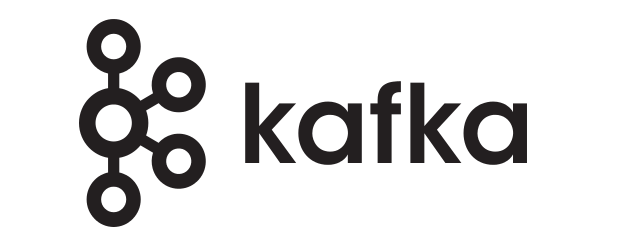前言
kafka是一个消息队列产品,基于Topic partitions的设计,能达到非常高的消息发送处理性能。Spring创建了一个项目Spring-kafka,封装了Apache 的Kafka-client,用于在Spring项目里快速集成kafka。除了简单的收发消息外,Spring-kafka还提供了很多高级功能,下面我们就来一一探秘这些用法。
项目地址:https://github.com/spring-projects/spring-kafka
简单集成
引入依赖
添加配置
spring.kafka.producer.bootstrap-servers=127.0.0.1:9092
测试发送和接收
启动应用后,在浏览器中输入:http://localhost:8080/send/kl。就可以在控制台看到有日志输出了:input value: "kl"。基础的使用就这么简单。发送消息时注入一个KafkaTemplate,接收消息时添加一个@KafkaListener注解即可。
Spring-kafka-test嵌入式Kafka Server
不过上面的代码能够启动成功,前提是你已经有了Kafka Server的服务环境,我们知道Kafka是由Scala + Zookeeper构建的,可以从官网下载部署包在本地部署。但是,我想告诉你,为了简化开发环节验证Kafka相关功能,Spring-Kafka-Test已经封装了Kafka-test提供了注解式的一键开启Kafka Server的功能,使用起来也是超级简单。本文后面的所有测试用例的Kafka都是使用这种嵌入式服务提供的。
引入依赖

<dependency> <groupId>org.springframework.kafka</groupId> <artifactId>spring-kafka-test</artifactId> <version>2.2.6.RELEASE</version> <scope>test</scope> </dependency>
启动服务
下面使用Junit测试用例,直接启动一个Kafka Server服务,包含四个Broker节点。
如上:只需要一个注解@EmbeddedKafka即可,就可以启动一个功能完整的Kafka服务,是不是很酷。默认只写注解不加参数的情况下,是创建一个随机端口的Broker,在启动的日志中会输出具体的端口以及默认的一些配置项。不过这些我们在Kafka安装包配置文件中的配置项,在注解参数中都可以配置,下面详解下@EmbeddedKafka注解中的可设置参数 :
- value:broker节点数量
- count:同value作用一样,也是配置的broker的节点数量
- controlledShutdown:控制关闭开关,主要用来在Broker意外关闭时减少此Broker上Partition的不可用时间
Kafka是多Broker架构的高可用服务,一个Topic对应多个partition,一个Partition可以有多个副本Replication,这些Replication副本保存在多个Broker,用于高可用。但是,虽然存在多个分区副本集,当前工作副本集却只有一个,默认就是首次分配的副本集【首选副本】为Leader,负责写入和读取数据。当我们升级Broker或者更新Broker配置时需要重启服务,这个时候需要将partition转移到可用的Broker。下面涉及到三种情况
- 直接关闭Broker:当Broker关闭时,Broker集群会重新进行选主操作,选出一个新的Broker来作为Partition Leader,选举时此Broker上的Partition会短时不可用
- 开启controlledShutdown:当Broker关闭时,Broker本身会先尝试将Leader角色转移到其他可用的Broker上
-
使用命令行工具:使用bin/kafka-preferred-replica-election.sh,手动触发PartitionLeader角色转移
- ports:端口列表,是一个数组。对应了count参数,有几个Broker,就要对应几个端口号
- brokerProperties:Broker参数设置,是一个数组结构,支持如下方式进行Broker参数设置:
- okerPropertiesLocation:Broker参数文件设置
功能同上面的brokerProperties,只是Kafka Broker的可设置参数达182个之多,都像上面这样配置肯定不是最优方案,所以提供了加载本地配置文件的功能,如:
创建新的Topic
默认情况下,如果在使用KafkaTemplate发送消息时,Topic不存在,会创建一个新的Topic,默认的分区数和副本数为如下Broker参数来设定
num.partitions = 1 #默认Topic分区数 num.replica.fetchers = 1 #默认副本数
程序启动时创建Topic
如果Kafka Broker支持(1.0.0或更高版本),则如果发现现有Topic的Partition 数少于设置的Partition 数,则会新增新的Partition分区。关于KafkaAdmin有几个常用的用法如下:
setFatalIfBrokerNotAvailable(true):默认这个值是False的,在Broker不可用时,不影响Spring 上下文的初始化。如果你觉得Broker不可用影响正常业务需要显示的将这个值设置为True
setAutoCreate(false) : 默认值为True,也就是Kafka实例化后会自动创建已经实例化的NewTopic对象
initialize():当setAutoCreate为false时,需要我们程序显示的调用admin的initialize()方法来初始化NewTopic对象
代码逻辑中创建
有时候我们在程序启动时并不知道某个Topic需要多少Partition数合适,但是又不能一股脑的直接使用Broker的默认设置,这个时候就需要使用Kafka-Client自带的AdminClient来进行处理。上面的Spring封装的KafkaAdmin也是使用的AdminClient来处理的。如:
ps:其他的方式创建Topic
上面的这些创建Topic方式前提是你的spring boot版本到2.x以上了,因为spring-kafka2.x版本只支持spring boot2.x的版本。在1.x的版本中还没有这些api。下面补充一种在程序中通过Kafka_2.10创建Topic的方式
引入依赖
api方式创建
注意下ZkClient最后一个构造入参,是一个序列化反序列化的接口实现,博主测试如果不填的话,创建的Topic在ZK上的数据是有问题的,默认的Kafka实现也很简单,就是做了字符串UTF-8编码处理。ZKStringSerializer$是Kafka中已经实现好的一个接口实例,是一个Scala的伴生对象,在Java中直接调用点MODULE$就可以得到一个实例
命令方式创建
消息发送之KafkaTemplate探秘
获取发送结果
异步获取
同步获取
kafka事务消息
默认情况下,Spring-kafka自动生成的KafkaTemplate实例,是不具有事务消息发送能力的。需要使用如下配置激活事务特性。事务激活后,所有的消息发送只能在发生事务的方法内执行了,不然就会抛一个没有事务交易的异常
当发送消息有事务要求时,比如,当所有消息发送成功才算成功,如下面的例子:假设第一条消费发送后,在发第二条消息前出现了异常,那么第一条已经发送的消息也会回滚。而且正常情况下,假设在消息一发送后休眠一段时间,在发送第二条消息,消费端也只有在事务方法执行完成后才会接收到消息
当事务特性激活时,同样,在方法上面加@Transactional注解也会生效
Spring-Kafka的事务消息是基于Kafka提供的事务消息功能的。而Kafka Broker默认的配置针对的三个或以上Broker高可用服务而设置的。这边在测试的时候为了简单方便,使用了嵌入式服务新建了一个单Broker的Kafka服务,出现了一些问题:如
1、事务日志副本集大于Broker数量,会抛如下异常:
默认Broker的配置transaction.state.log.replication.factor=3,单节点只能调整为1
2、副本数小于副本同步队列数目,会抛如下异常
默认Broker的配置transaction.state.log.min.isr=2,单节点只能调整为1
ReplyingKafkaTemplate获得消息回复
ReplyingKafkaTemplate是KafkaTemplate的一个子类,除了继承父类的方法,新增了一个方法sendAndReceive,实现了消息发送回复语义
也就是我发送一条消息,能够拿到消费者给我返回的结果。就像传统的RPC交互那样。当消息的发送者需要知道消息消费者的具体的消费情况,非常适合这个api。如,一条消息中发送一批数据,需要知道消费者成功处理了哪些数据。下面代码演示了怎么集成以及使用ReplyingKafkaTemplate
Spring-kafka消息消费用法探秘
@KafkaListener的使用
前面在简单集成中已经演示过了@KafkaListener接收消息的能力,但是@KafkaListener的功能不止如此,其他的比较常见的,使用场景比较多的功能点如下:
-
显示的指定消费哪些Topic和分区的消息,
- 设置每个Topic以及分区初始化的偏移量,
- 设置消费线程并发度
- 设置消息异常处理器
其他的注解参数都很好理解,errorHandler需要说明下,设置这个参数需要实现一个接口KafkaListenerErrorHandler。而且注解里的配置,是你自定义实现实例在spring上下文中的Name。比如,上面配置为errorHandler = "myErrorHandler"。则在spring上线中应该存在这样一个实例:
手动Ack模式
手动ACK模式,由业务逻辑控制提交偏移量。比如程序在消费时,有这种语义,特别异常情况下不确认ack,也就是不提交偏移量,那么你只能使用手动Ack模式来做了。开启手动首先需要关闭自动提交,然后设置下consumer的消费模式
spring.kafka.consumer.enable-auto-commit=false spring.kafka.listener.ack-mode=manual
上面的设置好后,在消费时,只需要在@KafkaListener监听方法的入参加入Acknowledgment 即可,执行到ack.acknowledge()代表提交了偏移量
@KafkaListener注解监听器生命周期
@KafkaListener注解的监听器的生命周期是可以控制的,默认情况下,@KafkaListener的参数autoStartup = "true"。也就是自动启动消费,但是也可以同过KafkaListenerEndpointRegistry来干预他的生命周期。KafkaListenerEndpointRegistry有三个动作方法分别如:start(),pause(),resume()/启动,停止,继续。如下代码详细演示了这种功能。
在上面的代码中,listenerID就是@KafkaListener中的id值“webGroup”。项目启动好后,分别执行如下url,就可以看到效果了。
先发送一条消息:http://localhost:8081/send/ckl。因为autoStartup = "false",所以并不会看到有消息进入监听器。
接着启动监听器:http://localhost:8081/start/webGroup。可以看到有一条消息进来了。
暂停和继续消费的效果使用类似方法就可以测试出来了。
SendTo消息转发
前面的消息发送响应应用里面已经见过@SendTo,其实除了做发送响应语义外,@SendTo注解还可以带一个参数,指定转发的Topic队列。常见的场景如,一个消息需要做多重加工,不同的加工耗费的cup等资源不一致,那么就可以通过跨不同Topic和部署在不同主机上的consumer来解决了。如:
消息重试和死信队列的应用
除了上面谈到的通过手动Ack模式来控制消息偏移量外,其实Spring-kafka内部还封装了可重试消费消息的语义,也就是可以设置为当消费数据出现异常时,重试这个消息。而且可以设置重试达到多少次后,让消息进入预定好的Topic。也就是死信队列里。下面代码演示了这种效果:
上面应用,在topic-kl监听到消息会,会触发运行时异常,然后监听器会尝试三次调用,当到达最大的重试次数后。消息就会被丢掉重试死信队列里面去。死信队列的Topic的规则是,业务Topic名字+“.DLT”。如上面业务Topic的name为“topic-kl”,那么对应的死信队列的Topic就是“topic-kl.DLT”
文末结语
最近业务上使用了kafka用到了Spring-kafka,所以系统性的探索了下Spring-kafka的各种用法,发现了很多好玩很酷的特性,比如,一个注解开启嵌入式的Kafka服务、像RPC调用一样的发送响应语义调用、事务消息等功能。希望此博文能够帮助那些正在使用Spring-kafka或即将使用的人少走一些弯路少踩一点坑。


